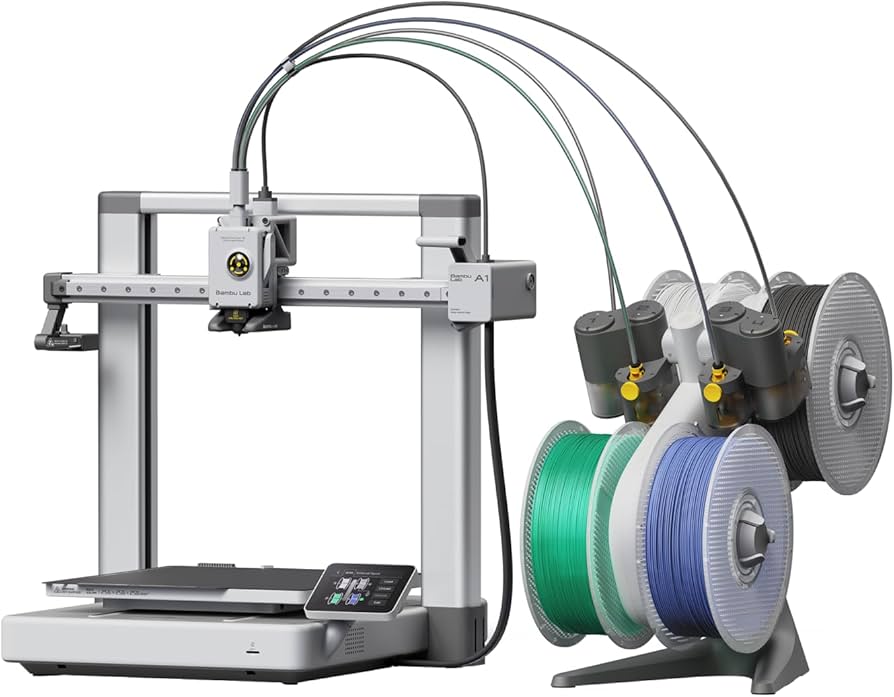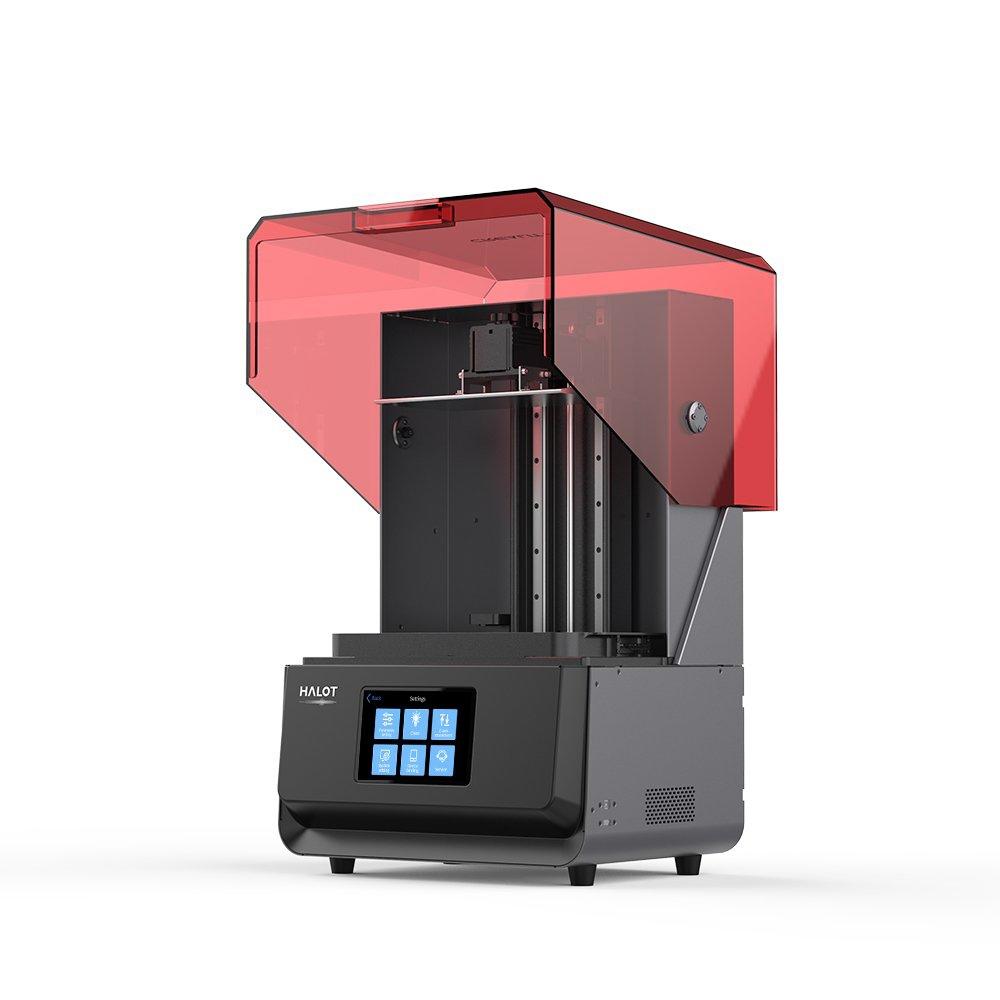Compare A1 vs Halot Max
Comparison between the best 3D printers
Choose the best 3D printer at the best price. The cheapest 3D printers are here.
Buy a 3D printer here with 3D Fila.
 |
 |
|
| Model | A1[BUY A1] |
Halot Max[BUY Halot Max] |
| Printing Material | Filament | Resin |
| Buy Filament for Bambu Lab A1 | Buy Resin forCreality 3D Halot Max | |
| Estimated price | $700,00 | $3000,00 |
| Manufacturer | Bambu Lab | Creality 3D |
| Release Year | 2023 | 2021 |
| Print Volume [mm] | 256x256x256 | 293x165x300 |
| Printer Size [mm] | 385x410x430 | 480x387x770 |
| Weight [kg] | 8,3 | 32,5 |
| Power Loss Recovery | YES | NO |
| Maximum Resolution [mm] | 0,1 | 0,03 |
| Processor | ||
| Display | Touchscreen 3,5 | Display touchscreen 5'' |
| Power Supply | 350 W | |
| Connectivity | Wi-Fi, Bambu-Bus, Cartão Micro SD | SD / USB / Wi-Fi |
| Operating systems | Windows, Linux, Macbook | Windows, Mac, Linux |
| Date of registration in the system | 2024-07-17 | 2022-11-04 |
| Release date | 2023 | 2021 |
| Extra features | The BambuLab A1 printer features fully automatic calibration, multi-color printing with the AMS system, active flow rate compensation, quick nozzle change with a clip, active motor noise cancellation, a build volume of 256x256x256 mm³, a maximum extruder temperature of 300°C, and a heated bed of up to 100°C. In addition, it has high precision, a machine health management system and an intuitive 3.5-inch touchscreen interface. | The Halot Max printer stands out for its large print size (293 x 165 x 300 mm) and uses SLA technology. It has an integral light source for improved accuracy and a strong core with an advanced operating system. Its Z-axis module ensures high precision, supported by efficient slicing software. The machine offers online OTA updates and boasts an adjustable layer thickness between 10 and 200 microns. Its XY-axis resolution is 3840*2160, with 0.05 mm accuracy, and an integral 405nm light source. The printer includes a 5" touchscreen and multiple connectivity options, such as USB, Creality Cloud, and HALOT BOX WiFi. With cutting-edge technology, the Halot Max is ideal for printing small models with uniform precision, thanks to its self-developed lighting system and stable printing mechanism, which includes dual linear guides, ball screws, and an intelligent brake system. |
| Support for multiple colors and materials (AMS and CFS) | YES | NO |
Notes * |
||
| Cost-benefit | 7 / 10 | 5 / 10 |
| Hardware | 4.2 / 10 | 1 / 10 |
| Tela | . | . |
| Print volume | 4 / 10 | 3 / 10 |
| Performance | 4 / 10 | 9 / 10 |
| [BUY A1] | [BUY Halot Max] |
Conclusion |
| In comparing the Bambu Lab A1 and the Creality 3D Halot Max 3D printers, several key factors come into play that highlight the strengths and weaknesses of each model. The Bambu Lab A1, released in 2023, offers a competitive price point along with a better cost-benefit ratio. Its features emphasize usability, including fully automatic calibration and multi-color printing, making it highly suitable for users looking for convenience and versatility. With a maximum resolution of 0.1 mm, it provides adequate precision for most general printing needs, while its power loss recovery capability adds an element of reliability. The compact design and lightweight nature of the printer also enhance its appeal for home and hobbyist users. In contrast, the Creality 3D Halot Max, despite its higher price, excels in technical specifications. Its SLA technology allows for exceptional precision, with a maximum resolution of 0.03 mm and an adjustable layer thickness that can achieve finer details than the A1. The size of the print volume and advanced features such as an integral light source for improved accuracy elevate its performance, especially for intricate models. However, it lacks features like power loss recovery and multi-color support, which may limit its practicality for certain applications. Ultimately, the choice between these two printers boils down to individual needs and priorities. For users seeking a balanced approach with good performance and user-friendly features, the Bambu Lab A1 represents an excellent choice at a more affordable price. On the other hand, for those requiring high precision and advanced capabilities for detailed projects, the Halot Max may justify its higher investment. In summary, the Bambu Lab A1 is ideal for casual and versatile use, while the Halot Max is better suited for specialized, high-detail applications. |

